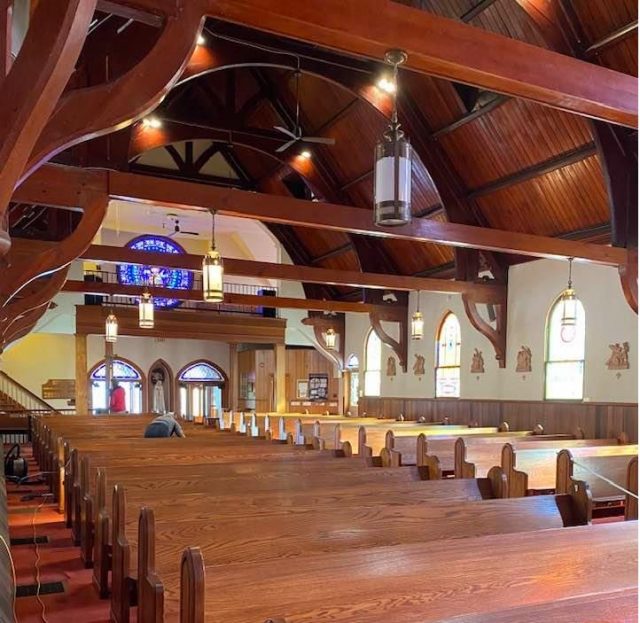
By DONALD WITTKOWSKI
Parishioners stepping through the mahogany front doors of the historic St. Joseph Catholic Church are greeted by a vaulted ceiling featuring massive arched beams that resemble the bottom of a ship’s hull.
Adding to the beauty of the 137-year-old sanctuary are stained-glass windows – more than a century old and believed to be irreplaceable – that line the walls and depict St. Joseph and other religious imagery.
Topped by a soaring white steeple, the Gothic-style building has been a religious, historic and cultural landmark in Sea Isle City for nearly as long as the community’s founding in 1882 by visionary real estate developer Charles K. Landis.
Now, the old church is undergoing renovations involving a communitywide effort between parishioners, preservationists, local contractors and private donors to ensure the building will remain a key part of Sea Isle for many years to come.
“We even get letters from people who are members of other churches who feel this church is the heart of the community – always was, always will be,” St. Joseph’s parishioner Mike McHale said.
McHale has been a full-time parishioner of St. Joseph’s for 43 years and is one of the leaders of a preservationist group that fought to save the historic sanctuary amid fears that it could be demolished.
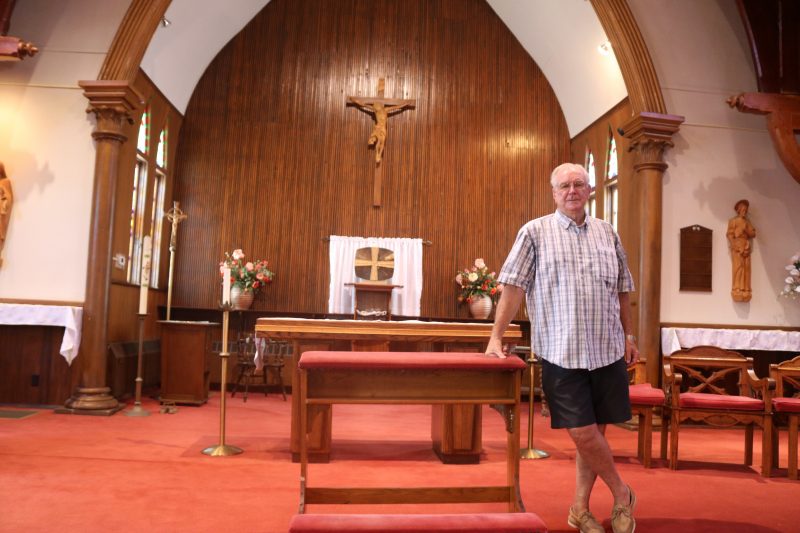
During a tour of the church Thursday, McHale gave a glimpse inside to show how the renovations are progressing. He praised the community for coming together to fund more than $100,000 in renovations so far, including the removal of mold contamination that had formerly kept the building closed.
Painting, plumbing, electrical and roof improvements are all part of the project. Local contractors have donated their work and materials to help the preservationist group, called Save Our Historic St. Joseph’s Church, complete the work. McHale, 75, a former Sea Isle mayor, is one of the leaders of the group.
Now that the mold contamination has been cleaned up, the building is being refurbished with fresh paint, new windows, doors, gutters, sheetrock panels, light sconces and possibly a new heating system. The old paint on the exterior is being scraped off in preparation for a new coat of white paint.
St. Joseph Catholic Church will not be putting its own money into the renovations, so the expense must be funded by private donations and the generosity of the community. The Save Our Historic St. Joseph’s Church group has agreed to raise the money to “completely renovate the entire structure,” according to a press release.
Donations continue to be sought to help pay for the renovations. An open house is expected to be held sometime in August to celebrate the 137th anniversary of the church’s dedication to St. Joseph, the patron saint of fathers, families and workers.
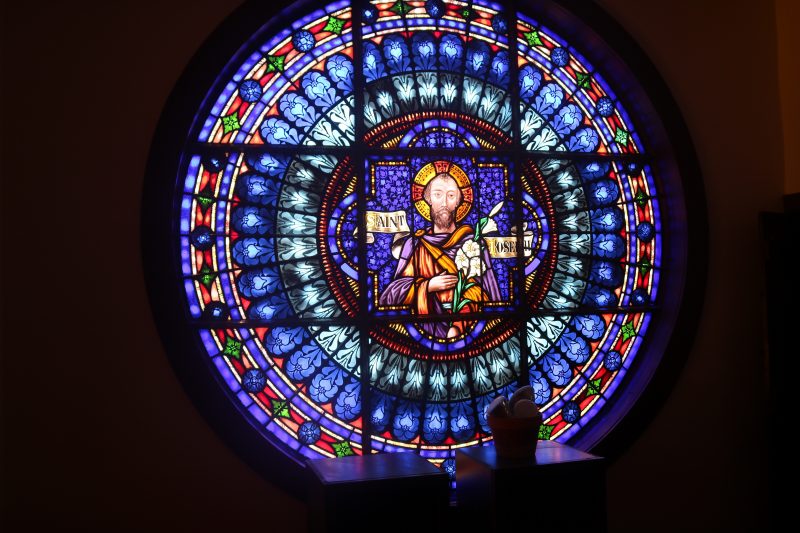
St. Joseph’s image is prominently depicted in a statue that overlooks the steps of the church’s front entrance, as well as in a circular stained-glass window on the second floor. There are plans to light the statue at night once the electrical work is completed.
McHale said the stained-glass image of St. Joseph is comprised of 750 individual panes of glass. Other stained-glass windows line the walls of the main sanctuary in a striking religious tableau.
It is believed that the stained-glass windows date to 1903 and were crafted in a way that can’t be duplicated nowadays, McHale said.
“The stained glass can’t be replaced,” he said. “The color is from a different technique and can’t be reproduced.”
The installation of the stained-glass windows in 1903 came in the same year that the church was uprooted and moved from its original location at 44th Street and Central Avenue to its current site a block away at 44th and Landis Avenue, McHale said.
Although it isn’t exactly clear why the church was moved then, it is believed it was to protect it from chronic flooding on a low-lying island vulnerable to stormwater. The building was also raised, which changed the entrance to the church from the basement to the front steps overlooking Landis Avenue, McHale explained.
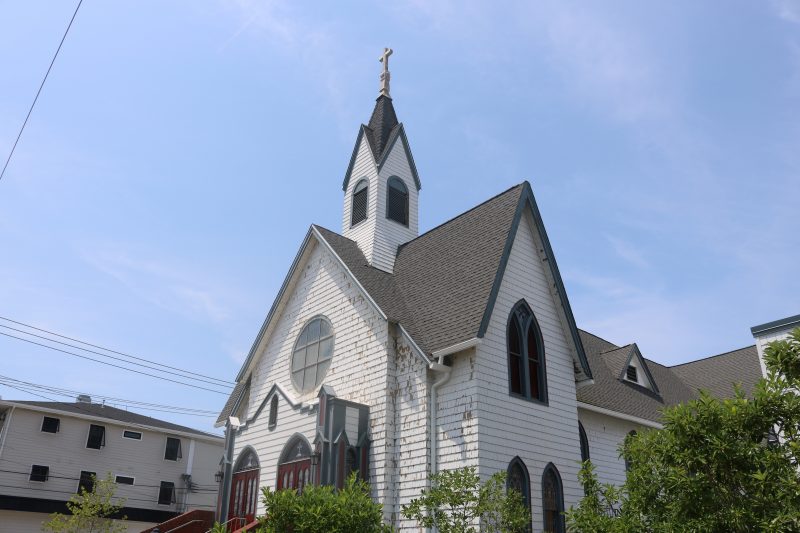
For more than two years, members of the Save Our Historic St. Joseph’s Church group fought to reopen the sanctuary and revive it as a place for worship, weddings, funerals and baptisms.
Preservationists had been locked in an intense dispute with the church’s former pastor, Father Joseph Perreault, who retired in 2020, over the future of the old sanctuary.
Fearing that the church would be demolished, the preservationists launched a fundraising and social media campaign to rally community support, including the placement of “Save Our Historic St. Joseph’s Church” lawn signs at homes and businesses throughout town.
However, McHale’s group has been on friendly terms with the church’s new pastor, Father Perry Cherubini, who took over last summer. As work continues on the church’s renovations, the preservationists have urged supporters to remove their lawn signs as a gesture of respect for Father Cherubini, who is best known as “Father Perry.”
“Father Perry has been a godsend,” McHale said. “He realized that there is so much love for the church and that it should stay.”
The old church stands side-by-side with the modern $7 million St. Joseph Catholic Church that opened in December 2011. The new church includes a 1,300-seat sanctuary serving as the main worship hall for the congregation.
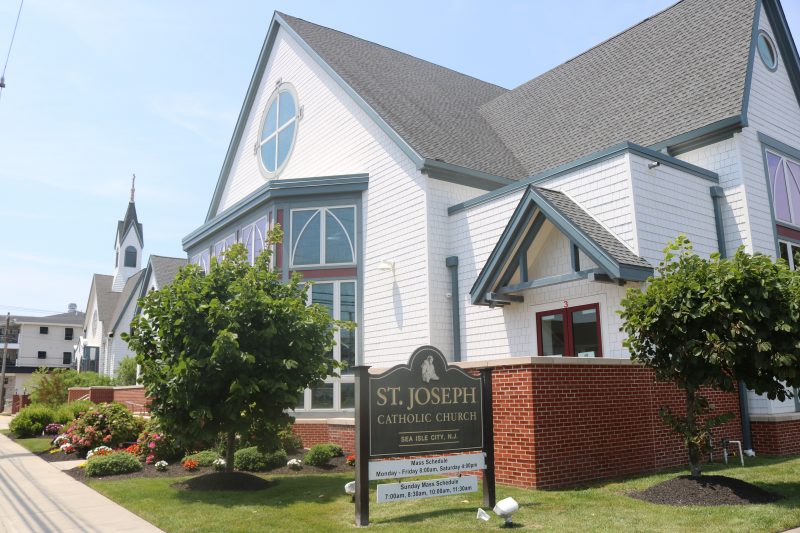
When Father Perreault was still serving as pastor, the Parish Council and Parish Finance Council voted unanimously last year to seek a “Decree of Relegation” declaring that the old church was no longer sacred. At the time, they said they did not want to take on the substantial debt to finance the old church’s maintenance and upgrades.
In addition to overseeing the renovations, McHale’s group is pursuing a legal fight to have the old church declared sacred again, which would allow the building to be used again for worship, weddings, funerals and baptisms.
For now, it will function as a community center for concerts, scripture readings and other activities that do not include the sacraments, McHale said.
Bishop Dennis Sullivan, who heads the Camden Diocese, which oversees St. Joseph Catholic Church in Sea Isle, granted the Decree of Relegation. Preservationists were alarmed that the decree was a prelude to the church’s demolition.
The Save Our Historic St. Joseph’s Church group appealed to the Vatican to overturn the decree. In an initial ruling, a Vatican council upheld the decree, but the group is appealing again to the Vatican’s equivalent of the Supreme Court. No date has been announced for a ruling in the second appeal.
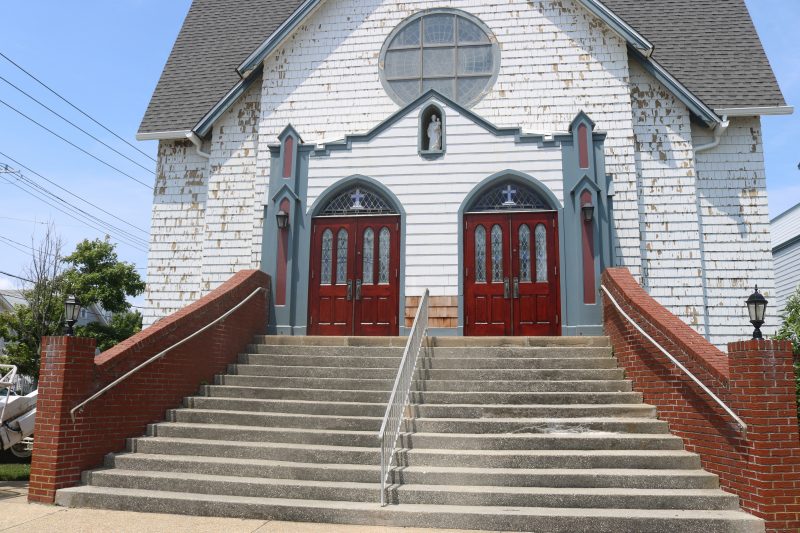
The old church’s future, no matter what the outcome of the appeal, is considered secure now.
Each day, residents and visitors in Sea Isle are reminded of the church’s presence with the ringing of its bell at 8 a.m., noon and 6 p.m.
The bell was made at a Maryland foundry in 1891 and is another one of the church’s historic treasures. McHale, who first began attending the church with his family when he was a child, recalled that ropes once allowed the altar boys to manually ring the bell before it was electrified in 2005.
The building’s construction in 1884, at the original location of 44th Street and Central Avenue, came after the church bought the land from Sea Isle’s founder, Charles K. Landis.
The price of the land was $200, McHale said.







